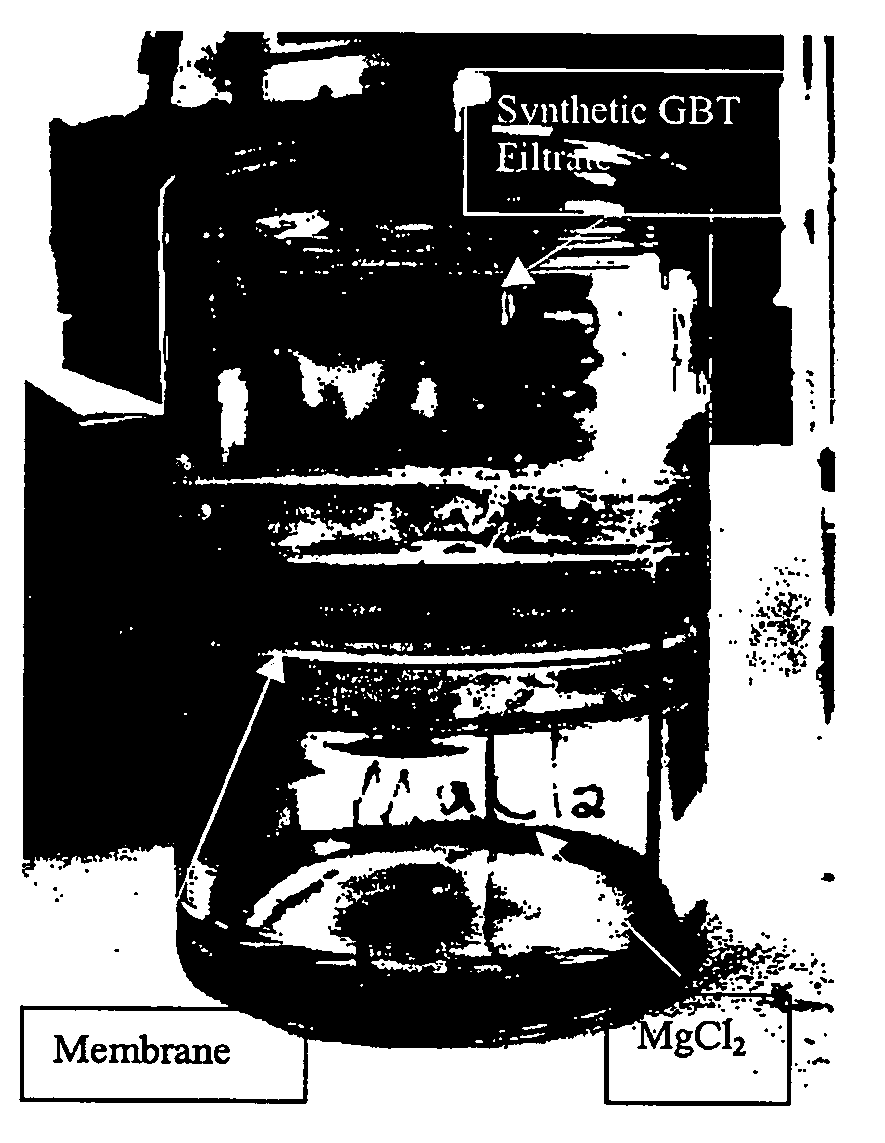Struvite crystallization
a technology of struvite and crystallization method, which is applied in the direction of dialysis, separation process, and other chemical processes, can solve the problems of phosphate in water, eutrophication of water, and severe economic, environmental and human health problems
- Summary
- Abstract
- Description
- Claims
- Application Information
AI Technical Summary
Benefits of technology
Problems solved by technology
Method used
Image
Examples
example ii
[0068] In another preferred embodiment of the present invention, the inventors have further discovered that struvite formation from supersaturated solutions may be accelerated and directed by use of negatively-charged membranes. In particular, sulfonate-type cation membrane were tested and found suitable. These findings were made in pure solutions consisting of dissolved magnesium, ammonium, phosphate, present in stoichiometric ratios, and in the presence of potassium and sulfate as background electrolytes.
[0069] The utility of this discovery was examined in a continuous struvite recovery process in wastewater treatment. The inventors determined: (1) the ability of negatively-charged membranes to accelerate and direct struvite formation from solutions resembling those of the most likely locations of application in a working treatment plant; and (2) the ability of the negatively-charged membrane to supply magnesium across the membrane from a larger reservoir of magnesium chloride, f...
example iii
[0082] In another aspect of the invention, experiments using compressed monomolecular layers of alkyl sulfate and alkyl sulfonates showed the same accelerating effects on struvite crystallization as found earlier for stearate (an alkyl carboxylate). Use of toluene instead of chloroform as a stearate solvent produced similar results as before. Taken as a whole, these experiments confirmed that the accelerating factor for struvite formation was the presence of a negatively-charged surface on which struvite may nucleate. This formation was not an artifact of the solvent or a particular charged group. Further microscopy demonstrated repeatedly that the struvite crystals formed were highly symmetrical and quite different in size and shape from those that nucleated on random dust particles.
[0083] In an attempt to better visualize the plane of crystallization of struvite on the monolayer, the inventors initiated experiments to form monolayers at solid / liquid interfaces instead of liquid / a...
PUM
| Property | Measurement | Unit |
|---|---|---|
| pH | aaaaa | aaaaa |
| pH | aaaaa | aaaaa |
| length | aaaaa | aaaaa |
Abstract
Description
Claims
Application Information
 Login to View More
Login to View More - R&D
- Intellectual Property
- Life Sciences
- Materials
- Tech Scout
- Unparalleled Data Quality
- Higher Quality Content
- 60% Fewer Hallucinations
Browse by: Latest US Patents, China's latest patents, Technical Efficacy Thesaurus, Application Domain, Technology Topic, Popular Technical Reports.
© 2025 PatSnap. All rights reserved.Legal|Privacy policy|Modern Slavery Act Transparency Statement|Sitemap|About US| Contact US: help@patsnap.com



